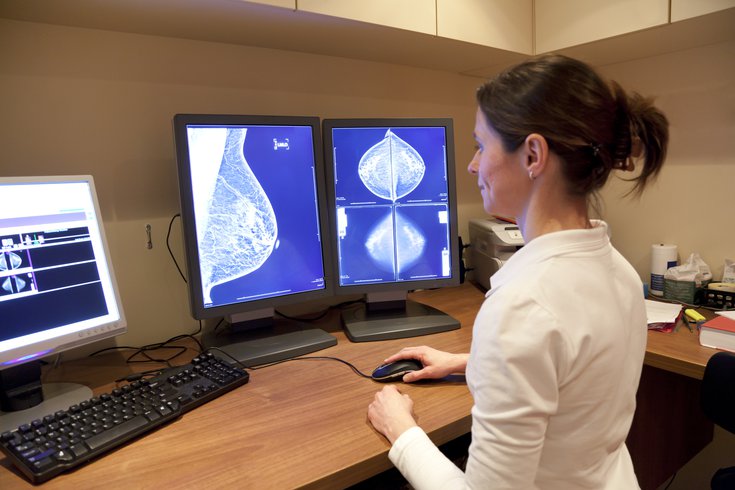
January 30, 2023
 Source/Image licensed from Ingram Image
Source/Image licensed from Ingram Image
Dense breasts make it more difficult to detect cancer via mammograms because the fibroglandular tissue that comprises them shows up white – just like abnormalities.
Having dense breasts increases the likelihood of developing breast cancer, but many women are unaware that this risk factor is as important as having a family history of cancer and various lifestyle factors.
Research shows women with extremely dense breasts have up to four times higher risk of breast cancer than those with the lowest breast densities. That's higher than the risk associated with a family history of breast cancer, which doubles the likelihood.
A survey of nearly 1,900 women published last week, found that most women were unaware that breast density was a risk factor for breast cancer. The survey asked the women, ages 40 to 76, to compare various breast cancer risks, including a family history, being overweight or obese, drinking more than one alcoholic beverage per day, never having children and having had a prior breast biopsy. Most pegged family history as the primary risk factor.
In interviews conducted with 61 participants, only six recognized breast density increases the risk of cancer. But most were aware that dense breasts make it more difficult to detect cancer on a mammogram.
Breast density measures the amount of fatty tissue within a woman's breasts.
Breasts are made up of glandular tissue, fibrous connective tissue and fatty breast tissue, according to the National Cancer Institute. Dense breasts have higher amounts of glandular tissue and fibrous connective tissue than fatty breast tissue. Though breast density is often inherited, there are certain factors that affect it. It also can change with age.
About 10% of women have extremely dense breast tissue. Another 40% have scattered fibroglandular breast tissue, which means their breast contain areas of dense glandular and fibrous connective tissue. About 10% of women have breasts nearly made up of all fatty breast tissue.
Dense breasts make it more difficult to identify cancer on a mammogram because fibroglandular tissue shows up white – just like some abnormal changes, like calcification and cancer. Fatty tissue shows up black, making it easier to differentiate it from cancerous masses.
The accuracy of a mammogram of a dense breast can be as low as 30%. But for breasts mostly made of fatty tissue, it can be up to 98% accurate.
Because of this, women with dense breasts often are called back for additional testing including more advanced imaging such as ultrasounds, MRIs and biopsies. Radiologists say that a digital breast tomosynthesis – a more advanced form of mammogram – is more accurate at detecting cancer masses in dense tissue than standard mammograms are.
Breast density doesn't just make detection more difficult. It is also increases a woman's risk of developing breast cancer, although scientists aren't sure exactly why. One possible theory suggests the composition of the dense tissue plays a role.
Higher breast density has been linked to having a lower body mass index and the use of menopausal hormone therapies. Lower breast density has been associated with increased age and having children.
The only way women can know whether they have dense breasts is via mammogram.
But only 38 states, including Pennsylvania and New Jersey, require health care providers to give women information on their breast densities after they undergo mammograms. In 2019, the U.S. Food and Drug Administration proposed a rule that would require all U.S. women be notified of their breast densities. The rule has not yet been finalized.
Dense breasts are common – almost half of women age 40 and older who get mammograms have dense breasts. But that doesn't mean the risk should be downplayed, scientists say. Women with high breast densities may benefit from supplemental screenings. Pennsylvania and New Jersey each have expanded insurance coverage for breast imaging.
Because the risk of false-positives increases with additional screening, doctors and patients are advised to discuss the various potential risks and benefits. Women also are advised to talk to their doctors about the ways to reduce their overall risk. Though breast density and family history cannot be changed, limiting alcohol consumption, eating a healthy diet and exercising regularly can reduce the risk of cancer.
U.S. health guidelines recommend women ages 50 to 74 receive a mammogram every two years. Those ages 40 to 49 are advised to talk to their doctors about when – and how frequently – to get mammograms.